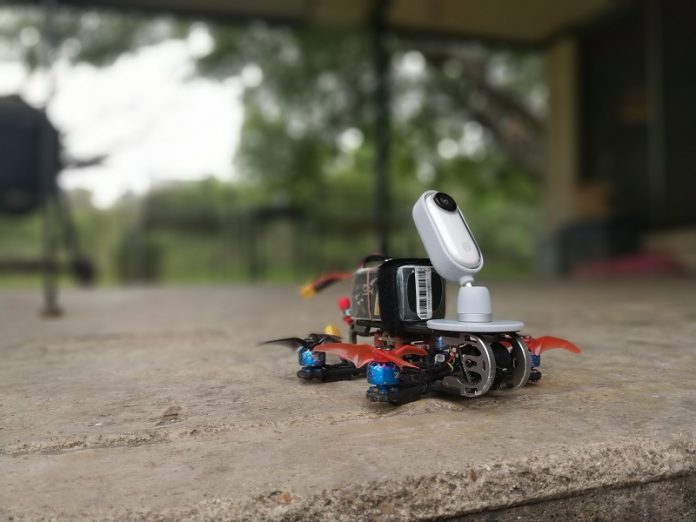L’articolo è riportato dal sito collegato al link che state leggendo. Clic per collegarsi al sito originale.
Clic to view the source link
Jason Smalling is an FPV pilot who loves his GoPro Hero5 Session, but he believes the Insta360 Go (reviewed here) is even better for FPV. In this post, he discusses the Insta360 Go’s advantages for FPV. First, here’s one of his videos with the Insta360 Go on a 2.5-inch micro drone:
360R: Tell us about yourself. How long have you been flying FPV?
JS: I first got interested in flying FPV drones six years ago, but the cost of entry was so expensive back then. So I put it on the back burner until I progressed farther along in my career. I was able to get my first kit put together nearly 2 years ago, but the first six months were brutal! I thought the best way to learn was trial by fire and just buy a drone and start flying (I mean crashing). I overpaid for a BNF [a preassembled bind-and-fly quad that just needs to be paired with your googles and transmitters] that was a nightmare to keep in the air. Spent more time waiting on parts and learning to solder than I did flying. It wasn’t until Jan 2019 that I bought a AcroBee BeeBrain Lite that I could stay in the air long enough to get some stick time in. So coming from micro’s, I’ve only been flying 5″ for the last 3 months.
360R: What got you interested in the Insta360 Go?
JS: Man you can’t find that camera quality on anything close to 20 grams. And having built in FlowState Stabilization was just the icing on the cake! The only downside was the 60-second recording limit that I was positive wouldn’t be an issue for long. And sure enough they’ve come out with FPV Mode 5 minute recording. I’m hoping to see more 3D prints available and get a GO mount for my 5″ quads. I love my GoPro Hero5 Session, but when the GO weights almost 1/4 of the session your going to feel that savings in the air. [Note: GoPro Hero5 Session weighs 74 grams, while Insta360 Go weighs 20 grams.]
360R: What are the advantages and disadvantages of an Insta360 Go on a micro drone compared to using a GoPro on a larger quad?
JS: With the FAA’s NPRM announced this year, it has really put a shock on the hobbyist. I’ve built a 2.5″ micro that can carry a Hero5 Session and weighs 248 grams. It flies like a cinewhoop and will do some mild freestyle. But when I run the Insta360 GO and the included base plate pivot mount that shaves off around 35 grams compared to the GoPro. This turns my micro into a freestyle beast! Big dives without any issue. I feel like it has more power/weight than my 710 gram 5″ freestyle quad with the GoPro. I cannot wait to get this GO mounted on my bigger drones.
360R: What would you like to say to other FPV pilots who are curious about using the Insta360 Go on a quad?
JS: I know the first reaction is going to be the 1080p limitation… But I’ll edit and render in 4k so I say that’s just saving disk space anyway. It cost less, weights a fraction (which is priceless in this hobby) and has nearly the same stabilization as the Hero7 Black… you can’t go wrong with the GO!
For other inspiring FPV videos, subscribe to Jason’s YouTube page here. For more information on the Insta360 Go (on sale until April 17), check out my review page. For more information on FPV for beginners, check out this page.
The post Insta360 Go beats GoPro for FPV drones, says this pilot appeared first on 360 Rumors.















